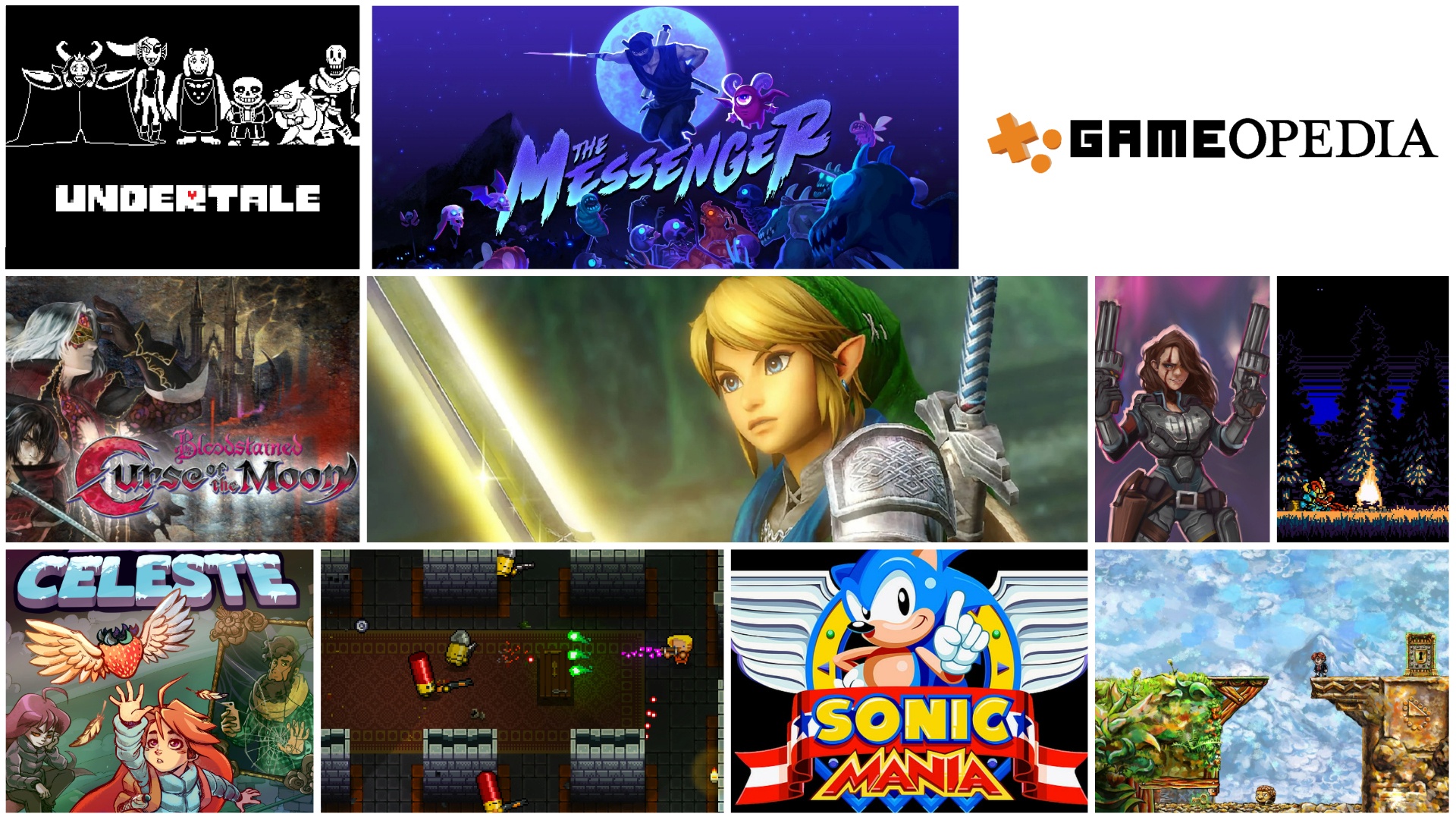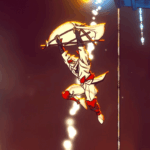When Nintendo released its Classic Mini NES in 2016, the gaming community went berserk. The Mini Nintendo Entertainment System (NES) sold out instantly due to ‘feverish demand’ and within days, scalpers were selling the console for up to nearly four times its retail price on eBay, at an average price of $230. In comparison, the Switch’s launch price was $299 in 2017.

Nintendo’s retro console is a small-size replica of the NES and there isn’t any place to insert cartridges – it contains 30 games made for the original NES, most of which are at least 30 years old. Yet the console was wildly popular, and Nintendo simply could not match the demand for it. The company ceased manufacturing the NES Classic Mini by 2018, but its foray into retro consoles had shown just how popular retro gaming had become.
The NES Mini’s unprecedented success suggests that even retro-inspired games may well find an audience among gamers, and this is indeed the case. In fact, modern retro-inspired games are popular both among older gamers looking to relive their childhood gaming experiences, and younger players eager for a taste of the classics. Such games succeed not only because of the pull of nostalgia, but also because they recreate the look and feel of older games while introducing innovative gameplay mechanics.
In this blog, we will discuss what a retro game is and how they have inspired a slew of modern games. We will also discuss the history of how modern, retro-style games attained a degree of mainstream popularity and recognition, and delve into some of the most well regarded retro-inspired games of today.
What is a Retro Game?
There isn’t a single widely-accepted definition of a retro game – what is considered retro, and what is considered a retro classic, is largely determined by what will evoke nostalgia among older gamers.
Today, titles released during the 8-bit to 16-bit period (or the third and fourth generation of consoles) are fondly remembered as classics by older gamers, who played these games as children and are more likely to gravitate towards titles that bring back memories of playing such games. The average gamer is around 35-37 years old, and a significant chunk of gamers today are in their late thirties or early forties. They have more disposable income to spend on games, and are more likely to spend frequently on gaming. Such players almost certainly got their first taste of gaming from the third and fourth generation of consoles and their nostalgia for this time period impels them to seek out the games of the ’80s and ’90s.
The games from this era are true classics, likely to remain relevant even when nostalgia ceases to be a factor. The Nintendo Entertainment System (NES) saved the industry after the video game crash of 1983 and introduced instant classics such as Super Mario Bros (1985) and The Legend of Zelda (1986), both of which would spawn long-running game franchises. The quality of these games has made retro gaming a highly enjoyable pastime – and the NES and SNES are especially popular among retro gamers. The shift from 2D to 3D, during the fifth generation, marked the end of an era that had brought gaming back to the mainstream. This may be why many indie titles, including the ones we discuss in this blog, pay homage to this time period in gaming history.

What is a Modern Retro Game?
A modern, retro-style game devoutly recreates the 2D aesthetic of the 8-bit and 16-bit era and adopts the gameplay mechanics of the ‘classic’ generation while introducing innovations made possible by modern tools and design perspectives. Essentially, a modern retro game tries not only to recreate the appearance of a much older game, but also the experience of playing such a game, with innovations that can appeal even to younger gamers not necessarily looking to relieve their childhoods.
There are some exceptions to the 2D aesthetic, however: both Project Warlock (2018) and Ion Fury (2019) are inspired by the appearance and gameplay of early FPS games like Doom (1993) and Duke Nukem 3D (1996). Both Project Warlock and Ion Fury are nevertheless inspired by the same time period, and the gamers who played games on the SNES (Super Nintendo Entertainment System, 1990) no doubt played Doom and other FPS titles on PC as well.

History of Modern Retro Games
The rise to prominence of modern retro-style games can be linked to some extent with the history of indie game development – in the 2000s, indie developers carved a niche for themselves by delivering retro-style experiences, and by the 2010s, such games hewed closely to the design and aesthetic of older games, intentionally recreating the experience of playing a classic from the past.
In the 2000s, major game studios were pushing the envelope on 3D gaming and the decade saw exponential growth in the quality of 3D graphics. Eventually, major studios transitioned to 3D game development and the 3D worlds pioneered by id and Epic Games became common. This created a market for those looking for nostalgic experiences of 2D.
According to Sam Roberts, director of the annual indie game festival Indiecade, the retro aesthetic helped indie developers create a niche for themselves because of the big developers’ ‘single-minded’ pursuit of high-res, photo-realistic graphics, which led them to abandon game genres that had been popular in the ’80s and ’90s. AAA studios were not really inclined to deliver retro gaming experiences, even though a demand for them existed, as demonstrated by the success of Cave Story (2004).
The 2D platform adventure Cave Story was the product of a single game developer, Daisuke “Pixel” Amaya, who made the game over the course of five years, mainly during his free time. The game has received widespread critical acclaim for its polished look and gameplay design, and for the sincere tribute it paid to classic franchises like Metroid, Mega Man, The Legend of Zelda, and Castlevania. Its success demonstrated the demand for retro games, and its quality and sophistication showed how indie game development had matured.

This was followed by other successful titles like Braid (2008), Super Meat Boy (2010) Terraria (2011) and Minecraft (2011). With the exception of Minecraft, these early indie successes were already harkening back to the 2D era, inspired in part by Cave Story. In 2008, Microsoft launched its summer of games event to promote indie games and prominently featured Super Meat Boy and Braid. Indie games had emerged from their niche and into the mainstream.
The 2D indie games of the 2000s had unique aesthetics and did not generally mimic the look of an 8-bit or 16-bit game. But from the 2010s onwards, new techniques allowed developers to create an authentic ‘retro’ look. Shovel Knight (2014), made with a custom engine, was so similar in appearance to the games of the ’80s and ’90s that some gamers believed it could be played on the NES console.

By the mid 2010s, there were a slew of indie games that took cues from Shovel Knight, and attempted to faithfully recreate the retro aesthetic of the ’80s and ’90s. Such games also retained older gameplay elements while introducing modern conveniences. Not all went as far as Shovel Knight in recreating the ‘classic’ look, but their visuals are clearly inspired by games for the NES and the SNES.
Why are Modern Retro Games So Popular?
Modern retro-inspired games are popular because they are well-developed titles that are highly replayable and maintain an older-looking visuals and audio – the best retro games combine nostalgia and innovation to appeal to a wide variety of gamers.
In fact, a video game is far more capable of evoking nostalgic feelings than a film or a piece of music because it is highly immersive, allowing you to revisit a cherished virtual space from the past. Playing retro games (rather than watching a classic film) can be an intensely personal experience.
However, just nostalgia alone cannot account for the popularity of retro games. Such games also bring back the elegant simplicity of older game design, and even while some of them are harder to play than the average game, their gameplay elements can be quickly understood, paving the way for an immersive experience quite unlike a modern AAA game, which can become overwhelming with its cutscenes, visuals, branching storylines and sprawling worlds. Those looking for a simpler experience may naturally turn to retro games.
According to The Independent, 90% of gamers will not finish modern games, partly because games now feature longer campaigns – a modern game’s campaign can take between 30-100 hours to complete. Given the complexity and length of modern video games, older gamers tend to prefer the simplicity and familiarity of a retro game that will not eat into their time. Even younger players can be attracted to such games because they are now trendy and their core gameplay loops are relatively easy to pick up.
Another compelling reason to play a retro game is that it provides an alternative to the toxic culture of competitive multiplayer gaming. As a critic observes, contemporary multiplayer focuses on ‘destroying’ opponents, but the couch co-op games of the ’80s and ’90s were about having fun together. Retro games that allow multiplayer gaming of the older kind let people relax instead of obsessing over being the best and racking up the most kills.
At its simplest, nostalgia is a sentimental yearning for a happy past. It indubitably plays a role in the popularity of retro-inspired games, but so do many other factors. Gamers who are rediscovering old-school couch co-op are not just reliving their childhood, they are escaping the needless stress of competitive multiplayer. Gamers who are tired of sprawling open-world games with endless side quests can enjoy both the simplicity and the challenge of retro-inspired games.
The Best Retro Games of Today
The best retro games released today blend nostalgia, innovative gameplay, simplicity and a very recognizable 8-bit or 16-bit aesthetic that goes right down to the use of ‘chiptune’ music and a rigorously limited colour palette derived from classic games. The games we discuss below are all very well-regarded for their adroit recreation of the past for gaming audiences of the present.
Celeste
Celeste (2018) is a retro platformer with unusual mechanics – it lacks a skill progression system even as the levels get tougher. You will have to restart each level, or screen, afresh if you make a single mistake, and the lack of level progression essentially impels you, rather than your player character, to become better at the game. This might give the impression that Celeste is a ‘hard’ game, meant to be ‘beaten’ – but the game uses its difficulty to tell a compelling and emotional story about a young woman who must climb a mountain while coping with her depression and anxiety.

You die a lot in Celeste, but each death is a reminder that you are constantly learning how to overcome challenges. When you do complete each level, there is an exhilarating sense of accomplishment, especially as your player character does not level up – it’s you who have surpassed the challenge. Celeste’s restrained approach to mental health actually helped a player cope with suicidal thoughts – a remarkable achievement for any game. Celeste was by no means a ‘cult’ hit – by the end of 2019, it had sold over a million units.
Sonic Mania
Unlike most retro-inspired games, which are usually made by indie studios, Sonic Mania (2017) was produced by Sega itself. Sonic Mania went back to the franchise’s roots – building and maintaining momentum were once again the focus of the game. The Sonic franchise had long been stagnant and Sonic Mania was a refreshing return to form.

The game allows you to control Sonic, Tails, Might, Ray, and Knuckles, each of whom have unique skills. Sonic’s new drop-dash move enables faster movement through the air, enabling new platforming strategies. The soundtrack, with its combination of remixed classics and modern tracks suited the game’s own mix of old and new. The graphics were true to the aesthetics of the Sega Genesis, but still looked great on modern displays. Sonic was finally cool again, and all thanks to a game that got back to the basics, and within a year of launch, it had sold a million copies.
The Messenger
Inspired by Ninja Gaiden (2004), The Messenger (2018) is an intense 2D side scroller that lets you play as a deadly Ninja who initially goes through various linear levels to combat a boss. But that is when the game throws a twist at you: the Ninja gains special powers that enable him to explore the past and present, presented in 8-bit and 16-bit styles.

But this is just the beginning – the past and present levels branch out into even more areas, and by then it is clear that The Messenger is not a linear game at all, but a game inspired by the Metroidvania gaming genre, which uses guided non-linearity to encourage exploration. The player must traverse various levels, solve puzzles and defeat several more enemies before he meets the real, final boss: the demon who destroyed his village.
Enter the Gungeon
Emulating the top-down shooters of the third and fourth console generations, Enter the Gungeon (2016) is a rogue-like title with a high difficulty level filled with creative gun designs. The procedurally generated levels follow an internal logic that results in true novelty, rather than slight variations of the same thing, increasing replay value. The game was a critical and commercial success: it has sold three million units since launch.

The game is difficult enough that there are online guides for beginners who may be unfamiliar with the ‘bullet hell’ mechanic – a staple of many games from the NES and SNES era. In a bullet hell game, a large number of projectiles in detailed formations are hurled at the player, who must then avoid them even as he tries to destroy the gun firing these missiles. Enter the Gungeon uses the bullet hell mechanic to maximal effect, with a great deal of variety both in terms of enemy projectiles and the implements that the player character can use to defeat them.
Bloodstained: Curse of the Moon
Bloodstained: Curse of the Moon (2018) is perhaps a game that hews too close to its inspirations. Heavily influenced by the Castlevania series, the game painstakingly recreates the 8-bit aesthetic and the slow-paced action of the NES classic Castlevania III: Dracula’s Curse (1989). In fact, the game’s combat system was so like its inspirations that one reviewer soon grew impatient with the characters’ ‘plodding movement and attack speed’, and IGN states that the game walks a fine line between homage and theft.

Other reviewers were more appreciative, praising the ease with which you could switch between multiple player characters, and the gothic visuals and music that set a brooding tone for the whole game. Even IGN praised its difficulty scaling, as the game introduced new gameplay elements rather than just giving bosses more health – some enemies can knock back the player, who might then plummet down the sort of abysses very common in 2D games. The game offers multiple options for tackling its eight stages, making it highly replayable. Within two years of launch, the game had sold over half a million copies.
Shovel Knight
Shovel Knight comes closest to perfectly recreating an 8-bit game and its art style counts almost as a faithful forgery, and even the widely praised chiptune soundtrack reinforces the feeling that one is playing a game made for the NES – developers actually had to clarify that the title could only run on modern consoles.
The 2D platformer pays homage to Zelda II: The Adventure of Link (1987), copying its downward thrust attack, and other inspirations include Castlevania, Super Mario Bros and the Mega Man series.
The game’s developers – Yacht Club Games – recreated many elements of a classic 2D side-scroller, including ‘parallax’ scrolling – the backgrounds of side-scrolling games can suggest a 3D space by shifting different layers at different speeds, mimicking how near parts of the landscape rush by you when you look out a train window, while horizon landmarks seem to remain immobile. Even the colour palette of the game is restricted to what would have been available during the NES era. Yacht Club Games took a nuanced approach to difficulty as well, introducing penalties for dying rather than returning you back to the beginning of the level – in effect, the game’s difficulty is the only aspect not faithfully copied from its inspirations.

The crowdfunded game proved so successful, both among audiences and critics, that it is now considered one of the greatest games ever made, and has sold 2.5 million copies since launch.
Undertale
The 2D RPG Undertale (2015), was also lauded as game of the year by many publications and was nominated for, and won, many awards – in a year when the Witcher 3 hit the stands. This is all the more incredible because Undertale was mostly made by a single designer, Toby Fox, who also composed the music for the game. Undertale, like Shovel Knight, is a classic of the 2010s.
Undertale shares the 8-bit aesthetic of Shovel Knight but its gameplay is entirely unique, quite unlike any games from the classic (or contemporary) era. Undertale leaves it up to the player to decide whether they want to kill or spare enemies, creating three distinct playstyles pacifist (with no kills), neutral (with some kills) and genocide (all kills). Undertale however, gently nudges you toward a neutral playthrough.

Many games discussed here add nuance to game difficulty – Undertale actually lets you talk to enemies and get past them without striking a single blow. Many of the games feature widely-acclaimed music, Undertale is the most streamed video game soundtrack on Spotify as of May 2022. Your play style even determines what content you will see – an iconic battle with one of the game’s toughest enemies (accompanied by one of gaming’s most popular tunes) is unlocked only if you choose the genocide playthrough. Simply put, Undertale is indie development at its innovative best, combining old and new, and transcending both.
Released in September, the game sold over half a million copies soon after launch, becoming one of the best-selling Steam titles of 2015. It has since made $26.7 million off Steam sales alone, and continues to remain popular, getting ported to the Switch as well, where it became one of the top-selling indie games in 2019.
Conclusion
The greatest quality of the retro games we have discussed is their runaway imagination, even as they hew close to their 8-bit inspirations. Nostalgia can only go so far; in fact, it has been criticised for discouraging innovation in game design. The designers of retro-inspired games are aware of this, and succeed in striking a fine balance between nostalgia and reinvention.
Many of the games featured here are far more innovative than some of the greatest AAA games released today, despite the millions of dollars spent by bigger studios – AAA titles invariably push the envelope in terms of graphics, but not always in terms of gameplay. Moreover, ‘risk aversion’ is the new norm for bigger industry players, and this allows smaller games, with smaller budgets, to truly spread their wings and soar to new heights. And the ones that reach truly undiscovered territory are those that go back to the roots of home console gaming.
Gameopedia offers custom solutions depending on your specific data requirements. Reach out to us for actionable insights about retro games, from their unique aesthetics and novel gameplay.













